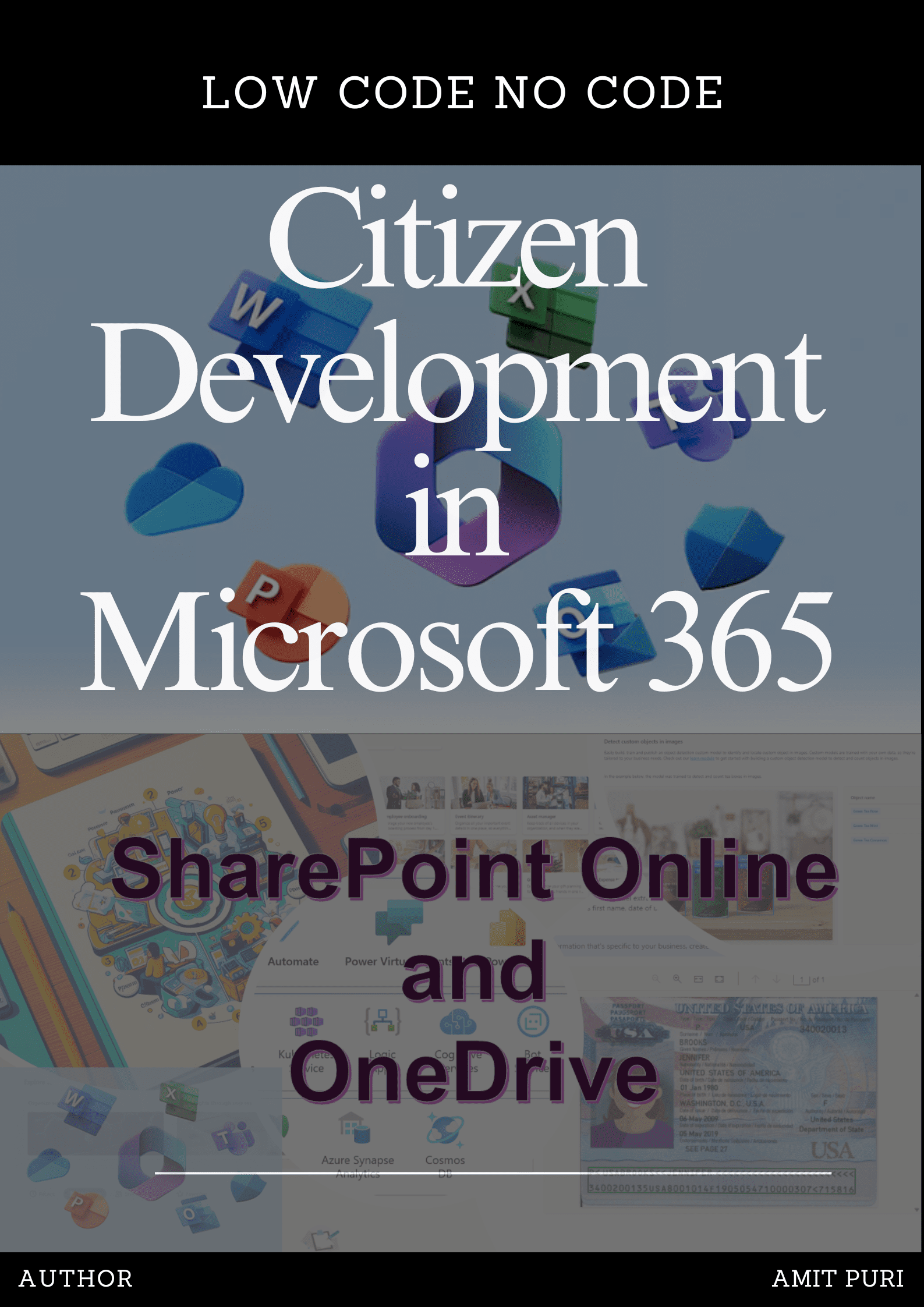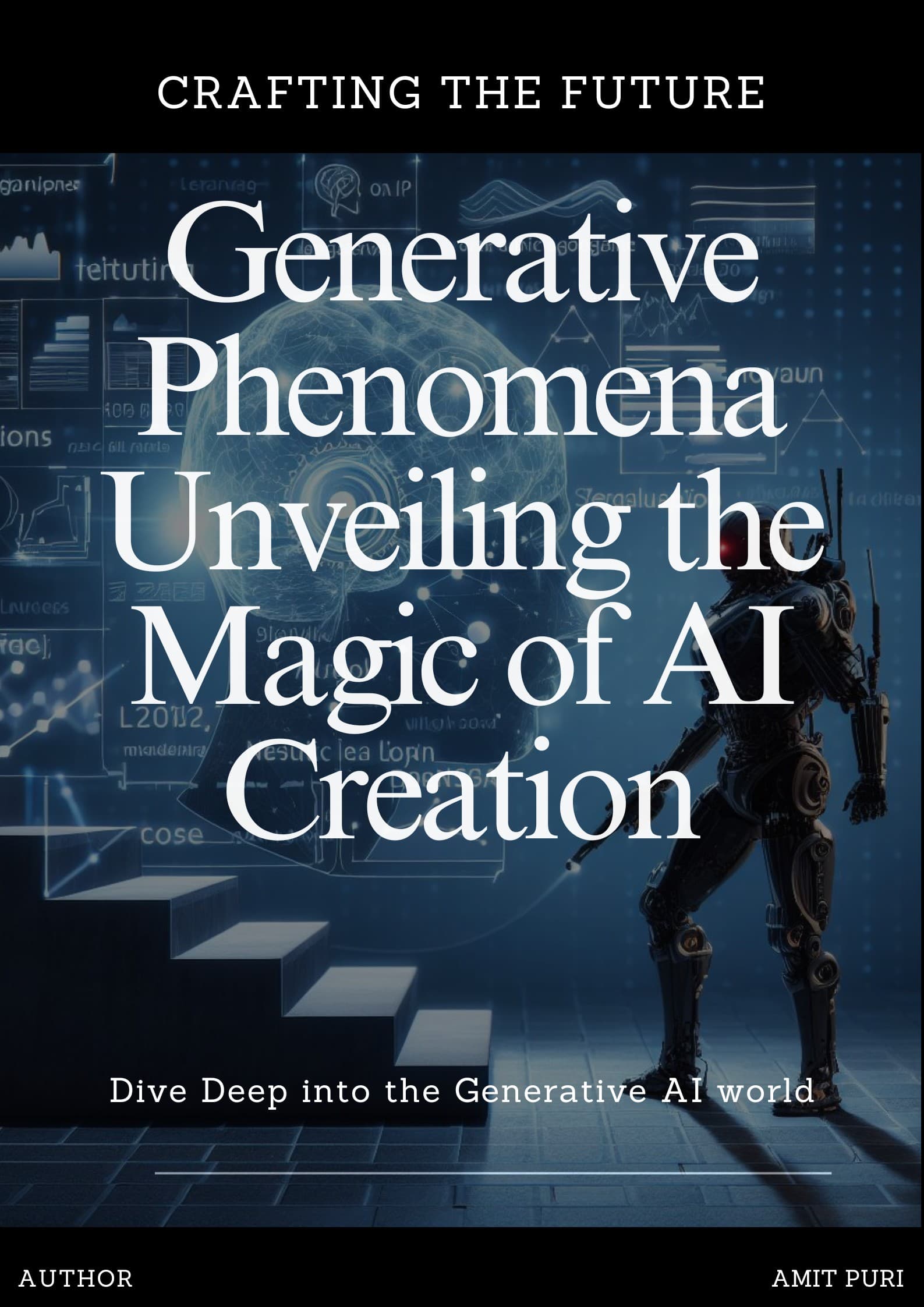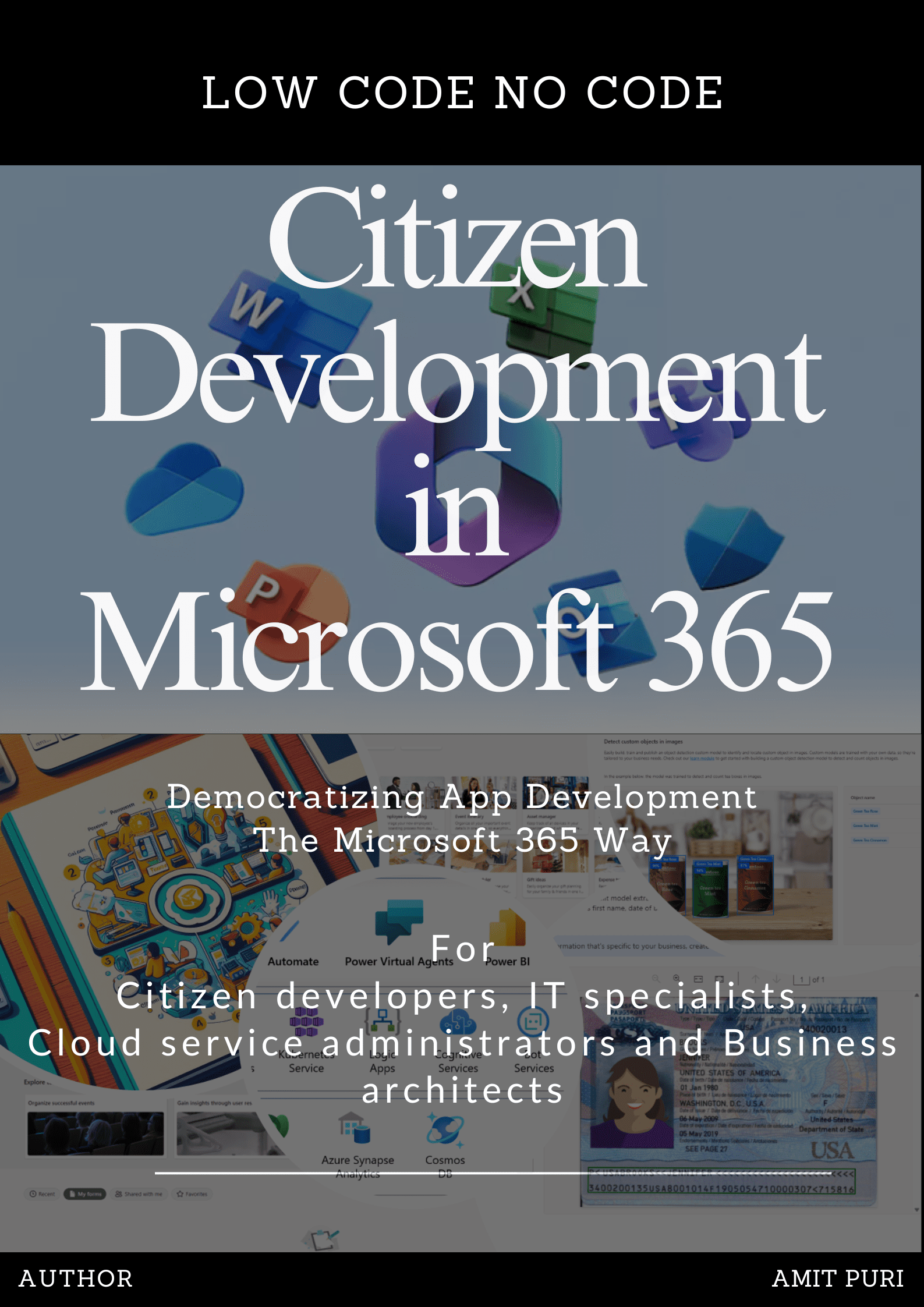9 min to read
Chapter 04 - Elevate Efficiency: Microsoft 365 Apps at Your Fingertips
Democratizing App Development: The Microsoft 365 Way

| Previous Chapter | 04/11 | Next Chapter |
|---|
The chapter 04 on Microsoft 365 Apps of “Citizen Development in Microsoft 365” delves deep into the world of Microsoft 365 Apps. The chapter introduces the apps model, design thinking, and the utilization of whiteboard templates for brainstorming. It emphasizes the significance of tools like Forms and Sway in enhancing workplace productivity. The chapter also explores the concept of design thinking, highlighting its importance in understanding user needs and iterating solutions for optimal outcomes. Microsoft Loop is introduced as a tool that fosters real-time collaboration, making team interactions feel organic and straightforward. The chapter also touches upon the challenges of digital overload in the modern hybrid workplace and offers insights and strategies to combat these challenges, ensuring a balanced and productive work environment.
Three Key Insights from the Chapter:
-
The Power of Microsoft 365 Apps: The chapter underscores the versatility of Microsoft 365 Apps, emphasizing their role in streamlining knowledge discovery, content organization, and collaboration. With tools like Microsoft Loop, Whiteboard, Forms, and Sway, users are equipped to enhance their digital endeavors and foster a collaborative work environment.
-
Embracing Design Thinking: Microsoft 365 integrates design thinking principles to boost user experiences. By understanding user needs, defining problems, and creating solutions through iterative testing, Microsoft ensures its products are user-centric, functional, and intuitive. Tools like Microsoft Loop exemplify this commitment, enabling real-time collaboration and co-creation.
-
Addressing Digital Overload: The modern hybrid workplace presents challenges like excessive meetings, unscheduled communications, and navigating different time zones. The chapter offers strategies and best practices, emphasizing the importance of setting boundaries, using collaboration tools effectively, and adopting a user-centric approach to ensure a harmonious work environment.
Organizations are increasingly recognizing the value of data in driving decision-making, innovation, and competitive advantage. Microsoft 365 Apps play a pivotal role in helping organizations harness the power of this “new oil.” Here’s how:
-
Integrated Data Analytics: Tools like Microsoft Excel have evolved beyond simple spreadsheets. With Power Query and Power Pivot, users can pull data from various sources, transform it, and create complex data models. Power BI, integrated with Microsoft 365, allows for the visualization and sharing of these insights across the organization.
-
Collaboration and Real-time Sharing: Microsoft Teams and SharePoint facilitate real-time data sharing and collaboration. Teams can work on documents simultaneously, ensuring that everyone has access to the latest data and insights.
-
Secure Data Storage and Compliance: OneDrive and SharePoint provide secure cloud storage solutions, ensuring that data is not only accessible but also protected. Microsoft 365’s advanced security features and compliance tools ensure that data is handled according to industry regulations.
-
Automation and Workflow Integration: Power Automate allows organizations to create automated workflows between apps and services. This helps in streamlining data collection, processing, and dissemination.
-
Custom App Development: With Power Apps, organizations can create custom apps tailored to their needs without extensive coding. These apps can pull data from various sources within the Microsoft 365 ecosystem, providing tailored insights.
-
Knowledge Mining: Project Cortex, part of Microsoft 365, uses AI to mine documents and other data, turning them into shared knowledge across the organization.
-
Seamless Integration: Microsoft 365 Apps are designed to work seamlessly together, ensuring that data can flow effortlessly between apps like Outlook, Planner, and To-Do, keeping teams aligned and informed.
In essence, Microsoft 365 Apps provide a ecosystem that allows organizations to collect, analyze, share, and act upon data effectively, ensuring they remain agile and informed in a rapidly changing business environment.
The integration of design thinking principles in Microsoft 365 Apps has been instrumental in enhancing user experiences and boosting productivity. Here’s how:
-
Empathy for Users: Design thinking starts with understanding the user’s needs, challenges, and pain points. Microsoft 365 Apps are developed with a deep understanding of the diverse needs of users, ensuring that the tools are intuitive, user-friendly, and address real-world challenges.
-
Iterative Development: Design thinking emphasizes prototyping and iterative testing. Microsoft frequently releases updates and new features for its 365 Apps based on user feedback and testing, ensuring that the tools evolve to meet changing user needs.
-
Holistic Solutions: Instead of focusing on isolated features, design thinking looks at the entire user journey. Microsoft 365 Apps are integrated seamlessly, allowing users to transition effortlessly between tasks and tools, enhancing the overall workflow.
-
Collaboration-Centric Design: Recognizing the importance of collaboration in modern workplaces, Microsoft 365 Apps like Teams, SharePoint, and OneDrive are designed to facilitate easy sharing, communication, and joint work, fostering a collaborative environment.
-
Flexibility and Customization: Design thinking values solutions that are adaptable to individual needs. Microsoft 365 Apps offer a high degree of customization, allowing organizations to tailor the tools to their specific requirements.
-
Problem-Solving Approach: Design thinking is all about solving problems. Microsoft 365 Apps are designed not just as software tools but as solutions to workplace challenges, be it communication barriers, data management issues, or workflow inefficiencies.
-
Inclusivity and Accessibility: Design thinking emphasizes designing for all users. Microsoft 365 Apps come with a range of accessibility features, ensuring that they cater to users with diverse abilities and needs.
-
Continuous Learning and Improvement: Design thinking promotes a culture of continuous learning. Microsoft offers extensive training resources, tutorials, and support for its 365 Apps, ensuring that users can continuously learn and make the most of the tools.
In conclusion, the integration of design thinking principles ensures that Microsoft 365 Apps are not just functional but also user-centric, intuitive, and tailored to address the challenges and needs of modern workplaces. This focus on the user experience and holistic problem-solving directly contributes to improved productivity and user satisfaction.
As the modern workplace undergoes rapid transformation, digital overload has emerged as a significant challenge. Microsoft 365 offers a suite of tools that can help organizations address this issue and prioritize employee well-being:
-
Focused Collaboration with Microsoft Teams: Microsoft Teams centralizes communication, reducing the need to juggle multiple platforms. Features like “Do Not Disturb” and “Quiet Hours” allow employees to set boundaries and minimize distractions.
-
Prioritization with Microsoft To Do: This tool helps employees organize tasks, set priorities, and manage their workload effectively, reducing feelings of overwhelm.
-
Mindful Breaks with Microsoft Viva Insights: Viva Insights offers personalized recommendations to take mindful breaks, focus on important tasks, and even schedule “focus time” to work without interruptions.
-
Streamlined Workflows with Power Automate: By automating repetitive tasks, Power Automate reduces manual workload, allowing employees to focus on more meaningful work.
-
Knowledge Management with Project Cortex: Instead of spending time searching for information, Project Cortex uses AI to organize content and expertise across the organization, making it easier for employees to find what they need.
-
Flexible Work Schedules: Microsoft 365’s calendar and scheduling tools enable flexible work arrangements, allowing employees to balance work with personal commitments and reduce burnout.
-
Training and Skill Development with Microsoft Learn: Continuous learning opportunities can help employees feel more competent and less overwhelmed by new technologies or processes.
-
Secure and Controlled Data Access: Tools like OneDrive and SharePoint ensure that employees have access to the data they need without being overwhelmed by unnecessary information. Advanced security features also reduce the stress associated with potential data breaches.
-
Feedback Mechanisms with Microsoft Forms: Regular feedback can help organizations identify areas of digital overload and address them proactively.
-
Digital Detox Initiatives: Using the analytics and insights from Microsoft 365 products, organizations can encourage digital detox periods, ensuring employees take breaks from screen time.
-
Accessibility Features: Microsoft 365 comes equipped with features that cater to diverse needs, ensuring that all employees can work comfortably and efficiently.
-
Integration and Simplification: Microsoft 365’s integrated ecosystem means fewer standalone tools and platforms, leading to a more streamlined digital experience.
In essence, while the digital transformation of the workplace offers numerous advantages, it also presents challenges. By leveraging Microsoft 365 products thoughtfully and proactively, organizations can mitigate the risks of digital overload, fostering a work environment that prioritizes efficiency, collaboration, and, most importantly, employee well-being.
| Now, available on | |||
|---|---|---|---|

|
|||
| India | UK | Canada | Australia |
The chapter 04 on Microsoft 365 Apps of “Citizen Development in Microsoft 365” delves deep into the expansive realm of Microsoft 365 Apps, emphasizing their transformative potential in today’s digital age. The chapter introduces the apps model, the principles of design thinking, and the challenges of digital overload. It underscores the significance of data in the modern era, likening it to “the new oil” and highlighting how Microsoft 365 acts as a conduit, making this data securely accessible to knowledge workers. The chapter also explores the extensibility of Microsoft 365, the power of the Microsoft Graph API, and the integration capabilities of Microsoft Teams. Furthermore, it touches upon the principles of design thinking, emphasizing empathy, iteration, and user-centricity. The chapter concludes by addressing the challenges of digital overload in the modern hybrid workplace, offering insights and strategies to combat these challenges and foster a more harmonious and productive work environment. The insights provided in this chapter are invaluable for organizations and individuals aiming to harness the full potential of Microsoft 365 Apps in their digital endeavors.
Read about the next chapter 05 - Collaborate and Thrive: Harnessing SharePoint Online and OneDrive for Success
Go back to chapters listing on Book - Citizen Development in Microsoft 365
| Previous Chapter | 04/11 | Next Chapter |
|---|
Review this book
Goodreads link https://go.amitpuri.com/gr-cd-m365
If you are interested in Citizen Development, refer to this book outline here on A Guide to Citizen Development in Microsoft 365 with Power Platform
| Now, available on | ||||
|---|---|---|---|---|
|
|
||||

|
||||
|
|
|
|
|
|
If you wish to delve into GenAI, read Enter the world of Generative AI
Also, you can look at this blog post series from various sources.
Stay tuned! on Generative AI Blog Series



Comments